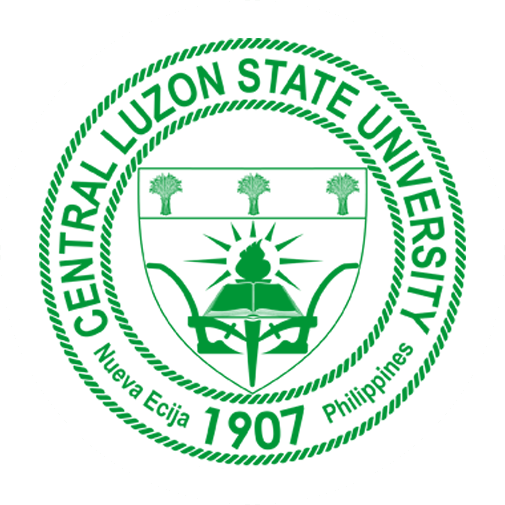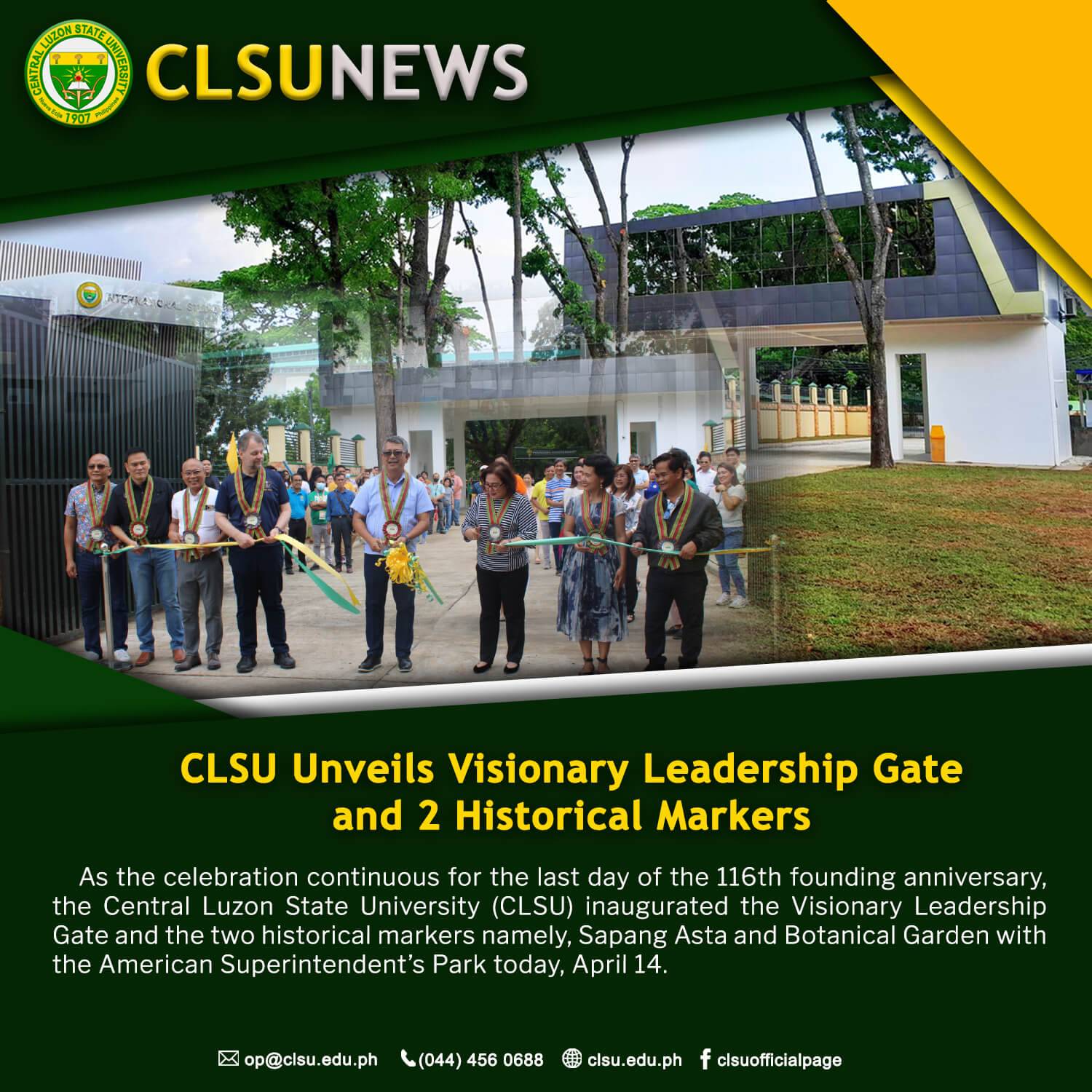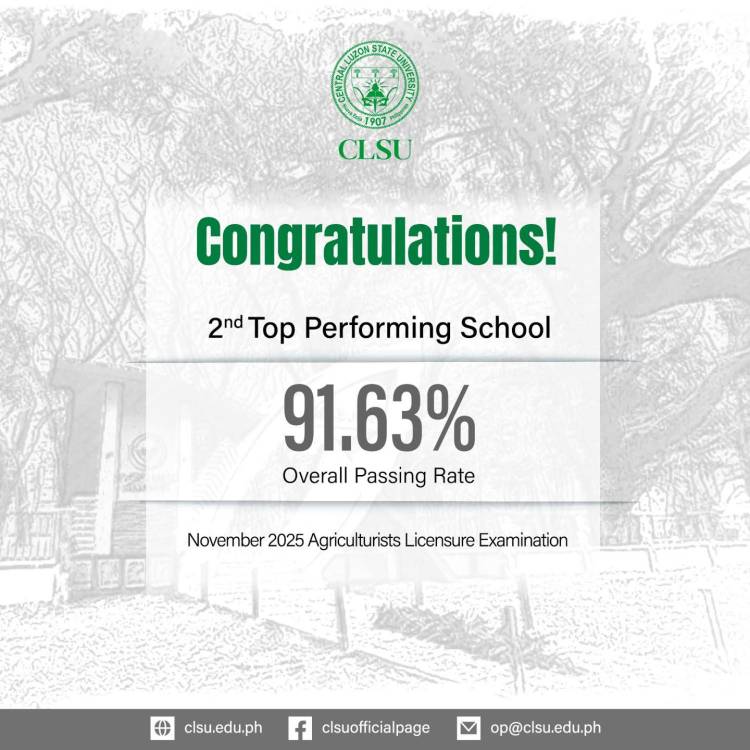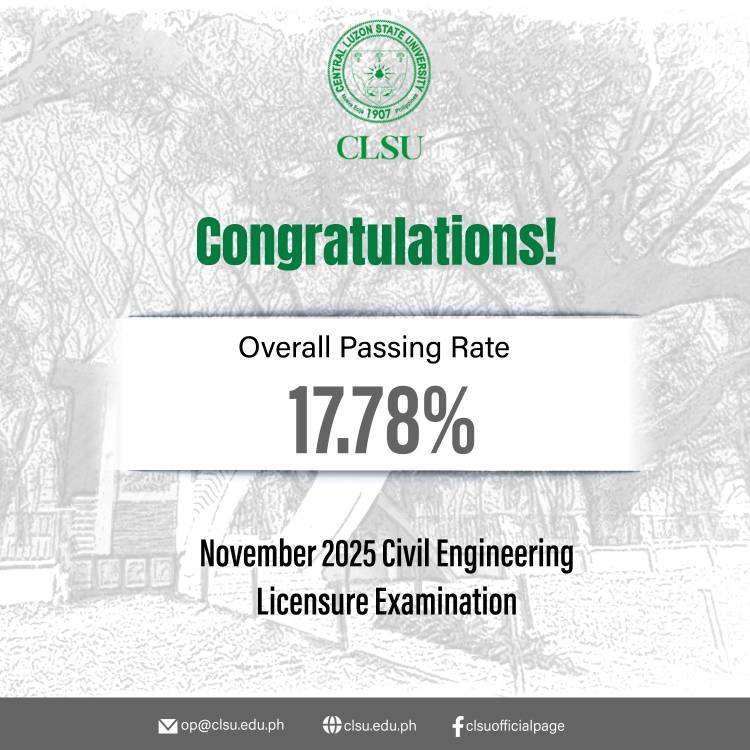As the celebration continuous for the last day of the 116th founding anniversary, the Central Luzon State University (CLSU) inaugurated the Visionary Leadership Gate and the two historical markers namely, Sapang Asta and Botanical Garden with the American Superintendent’s Park today, April 14.
These remarkable events were attended by the officials and staff from the U.S. Embassy in the Philippines led by Mr. John Groch, Public Affairs Officer, Mr. Nigel Maranan, Exchange, and Alumni Coordinator, and Mr. Daniel Chu; Hon. Micaela "Mikki" Violago, former 2nd District representative; and Dr. Khin Mar Cho, visiting professor from Cornell University, along with CLSU Executives, faculty and staff.
In his speech, Mr. Groch commended the efforts of CLSU in its vision of building the future but never forgetting its humble beginning.
"What've seen here in CLSU is that you are exploring the future and you formulate it by looking at your history, your traditions, and by honoring the past. And I think that's the reason why you stick together as a strong institution and your key to your success" he added.
Meanwhile, former Congresswoman Violago recognized the efforts of the university in providing quality education and economic development to the community.
"You have made the Novo Ecijanos proud. We are always supportive of realizing your dream, with your determination and efforts we can already visualize where this university is headed only towards greatness."
The Visionary Leadership Gate symbolizes the different endeavors of CLSU toward becoming a National Research University. More so, it will serve as an inspiration to all the stakeholders in foreseeing the future undertakings of the university. The said Gate, previously known as the third gate, bridges the road from the College of Agriculture going to the Lingap Kalikasan or the new College of Education building. It also houses the first smart classroom in the university.
Furthermore, the Sapang Asta, one of the newest historical markers of CLSU located beside the Visionary Leadership Gate, is a natural stream that flows through some areas inside the campus and is one of the major boundaries that reserved the almost 700 hectares of land in the Science City of Muñoz, Nueva Ecija. The said stream was a source of water for irrigation of students' crop projects, freshwater fishes and mollusks, and other domestic uses.
Meanwhile, the Botanical Garden featuring the American Superintendent's Park was soft-launched wherein a ribbon-cutting and tree-planting activity capped off the event. The said Park is set to be developed more in the future to further serve as a nesting and resting ground for the CLSU community.







